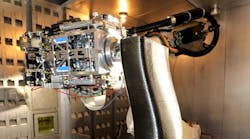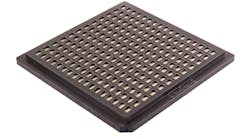Microwave bandpass filters (BPFs) are essential for maintaining separate channels in wireless communications systems. As such systems become more compact, BPFs must meet more demanding requirements for smaller size, lower insertion loss, higher out-of-band rejection (selectivity), and lower cost. Several techniques are used to design microwave BPFs,1-4 although the authors have developed an approach that delivers BPFs with extremely low passband insertion loss in smaller-than-conventional sizes. The secret lies in the use of metamaterials.
The cutoff points for the rejection bands of a BPF are located by attenuation poles or transmission zeros at finite frequencies. This can be done with different design approaches. For example, cross-coupling between nonadjacent resonators allows for creation of alternative signal paths from filter input to output ports, so that a complete transmission zero can be introduced at certain frequencies.4-10 Hence, many filter designs incorporate transmission-line zeros.11-13
Another important choice in the design of a filter regards the physical elements, which will impact the filter response and size. Open-loop resonators have often been used in microwave filter design.14-18 The open-loop resonator is constructed by adding half-wave-length microstrip lines with a certain coupling structure to achieve the required filter performance. Three types of coupling methods are used in these filters: electric coupling, magnetic coupling, and mixed coupling.19-21
For microstrip open-loop resonator filters, several attempts have been made to reduce the resonator size by changing its structure, such as by using an open-loop folded half-wavelength resonator,21,22 modified shapes,19,23 and defected ground structures (DGSs).24-28 However, employing DGS requires double ground processing, which further complicates the filter design.
Artificial dielectric metamaterial (composite) structures have been shown to exhibit novel electromagnetic (EM) properties. Studies revealed that the same EM properties at microwave frequency bands cannot be obtained with conventional materials. Metamaterials are single-negative (SNG) material (in terms of permittivity or permeability) or double-negative (DNG) media.29-31
Metamaterials have been realized employing either composite-right-left-handed transmission lines (CRLH) or split-ring resonators (SRRs) or as complementary split ring resonators (CSRRs).29-31 CRLH transmission lines (TLs) which are realized by periodically loading a conventional TL with series capacitors and shunt inductors, are nonresonant structures. They have been suggested for use in to many filters.32-35








